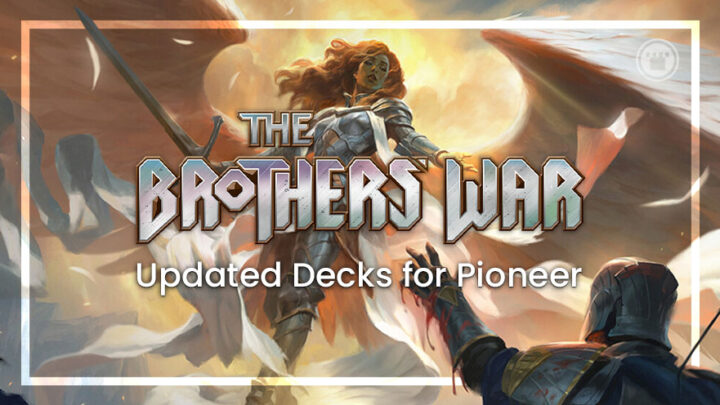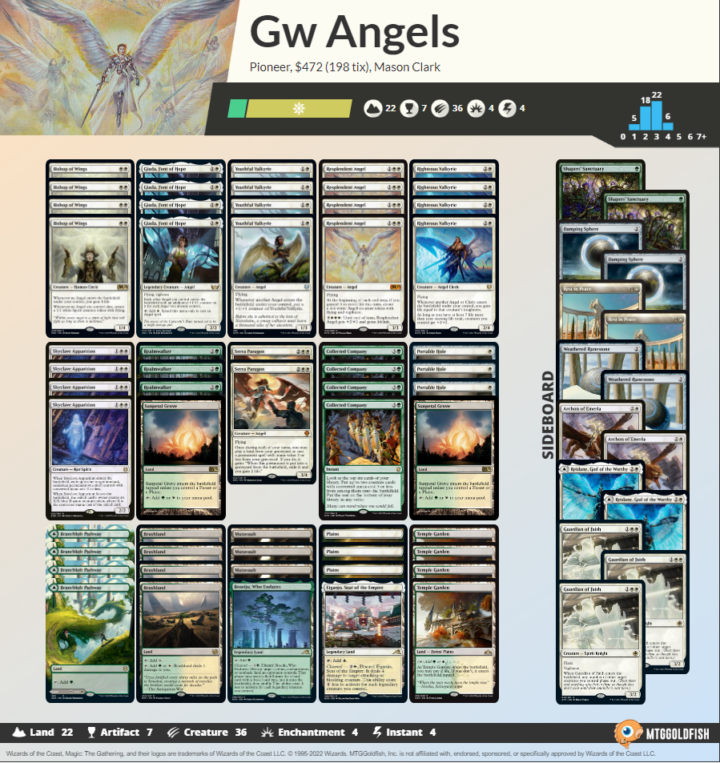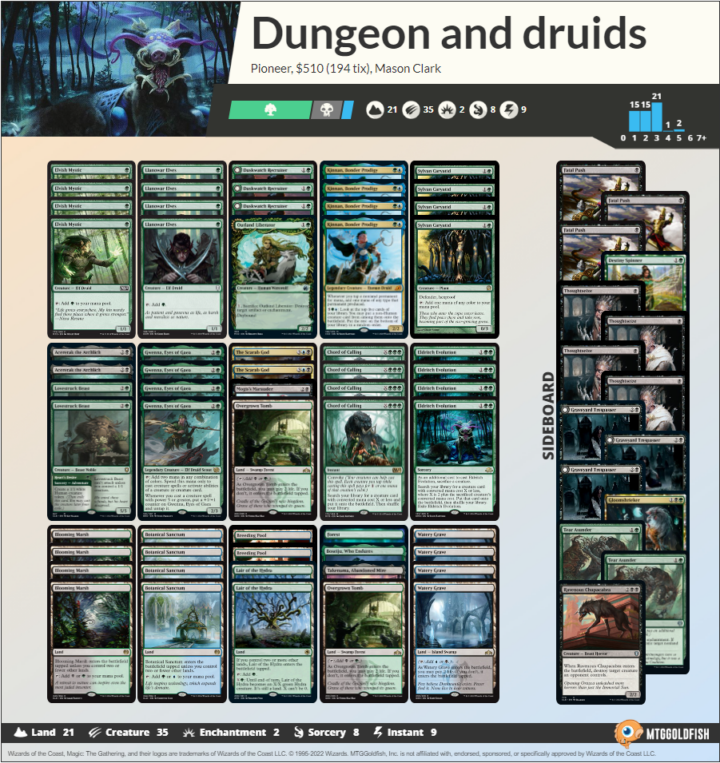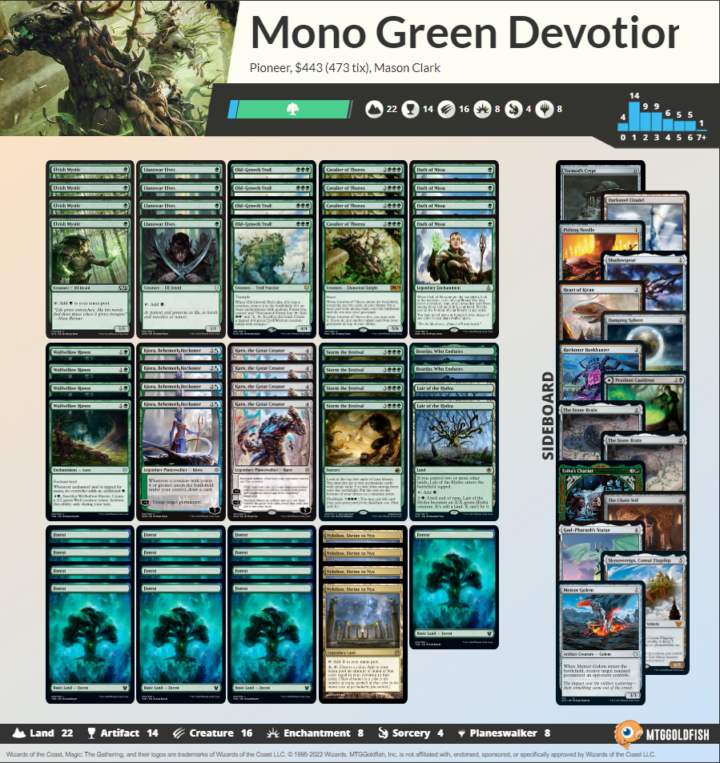The biggest Pioneer tournament of the year, DreamHack Atlanta, is just one week away, and players are rushing around trying to figure out what to play in a post Brothers’ War world. Can players trust the reliable meta decks, or will things change? That’s hard to say, but here are how some decks have changed after an injection of new cards.
Angels
This deck won the NRG series 5k last weekend and it has two, huge strengths. One is the ability to win most races against opposing creature decks. If your opponent is playing something like Mono-White, they are going to have an incredibly hard time trying to beat you down and finish you off before the flying angels win the race.
That’s before we even discuss how a lot of the angels have high toughness, which makes blocking incredibly easy against the mono white, red and Gruul deck (all the aggro decks of choice right now). And while on the topic of toughness, Pioneer is a format that largely relies on damage based removal. Two toughness is a big break point in the format and almost every creature in this deck is above that threshold.
The other big bonus for this deck is that it sports a good Mono-Green matchup, which is public enemy number one right now in Pioneer. Having a deck with a quick clock and evasive creatures is incredibly appealing.
However, this is normally where we reach the big problem with most decks that can beat Mono-Green: what about Rakdos Midrange? While not your best matchup, you do have a few cards that line up very well against them.
Collected Company has been a mainstay of grinding through removal heavy decks in the format, and Bishop of Wings in the main deck makes it so that killing any angels will leave a spirit behind. That often doesn’t make for the best presence, but against decks like Rakdos, it can make the difference.
Post board you have Shapers’ Sanctuary, but nothing too impactful. So while not the matchup you would want to play every round, it’s one you can overcome a fair percentage of the time.
The other big factor to remember is that Rakdos is not a pure control deck. The goal of Rakdos is to break up your deck a little bit and kill you before you can stabilize.
While life gain is often not very strong in Magic, this aspect of our deck could ruin Rakdos’ ability to race like they would normally want to do. Righteous Valkyrie makes all this possible. While it is both a life gain card with a good body, it’s also an anthem for all your creatures.
All together, Angels forms a formidable deck that punishes two thirds of the metagame.
Dungeon and Druids
Jesse Robkin and Ashe (shuddermtg), two friends of mine, made this deck. Their goal was to create a creature combo deck that could goldfish the mono green players and not fold to Rakdos.
But what is the combo? If you have Kinnan in play (or a flipped Duskwatch Recruiter) and a Gwenna, Eyes of Gaea who can activate her ability, you can cast Acererak the Archlich with Gwenna.
When you do, your Gwenna grows. But more importantly, you untap your Gweena. Thanks to either Kinnan helping you generate more mana or a flipped Duskwatch reducing the cost of your creatures, you’re either at the same starting mana or up one.
With that set up, you cast Acererak, who returns to your hand and Ventures into the Dungeon unless you’ve completed the Tomb of Annihilation. However, we are never going into the tomb. We will always choose the Lost Mine of Phandelver. This dungeon has a drain one life option, which you will repeat over and over again (after going through all the other rooms each time) until your opponent loses.
To help make the deck more consistent, it’s playing both Eldritch Evolution and Chord of Calling. Chord is a card we haven’t seen much of in Pioneer, but in a deck where you need hyper-specific pieces, it’s a great way to grab one on the end step to avoid all the sorcery based removal.
To help fight the grindy decks and give the combo another, little extra consistency, the deck sports The Scarab God. This card is a power house in any midrange matchup. While not quite enough when facing lots of removal (like we saw during its time in Standard), when paired with an infinite combo, it’s able to actually present a real clock for the opponent.
Fans of creature combo decks are going to love this one, and seeing how this deck evolves over the next few months is going to be very exciting!
Mono Green
It’s hard to not talk about this deck given its place in the meta, but I won’t spend too much time on it since there is plenty of literature on this deck.
The Stone Brain is the big get from The Brothers War for this deck. It serves as both a hate card for linear combo decks but also a win condition. Since you are able to loop The Stone Brain with Karn, the Great Creator grabbing it from exile, you can actually deck your opponent without having to go through all the hoops to make black mana for the usual combo kill. This allows for cleaner wins and makes doing the combo a bit easier for newer players, too.
Devotion has been one of the best decks in the format for a while now. While it’s not the only choice, it’s often one of the best. The thing many people forget about the Devotion deck in Pioneer is it’s the highest power thing you can be doing, by a significant margin. So while it’s not the only deck you could be playing, it’s the one with the highest ceiling.
End step
The season’s first regional championship is just a week away! It’s going to be exciting to see what players do to try and break open the format. Enjoy the action and keep your

Mason Clark is a grinder in every corner of the game who has played at the pro level and on the SCG Tour with Team Nova. Whether he’s competing in Standard, Historic or Modern, Mason plays with one goal in mind: to be a better player than he was the day before. Check out his podcast, Constructed Criticism, and catch his streams on Twitch.




